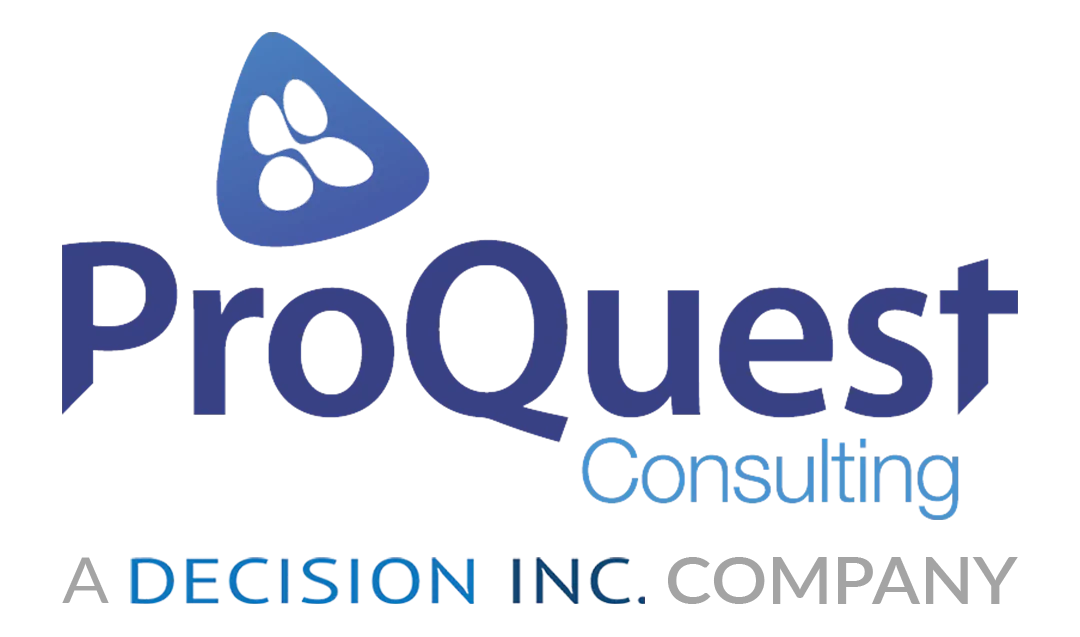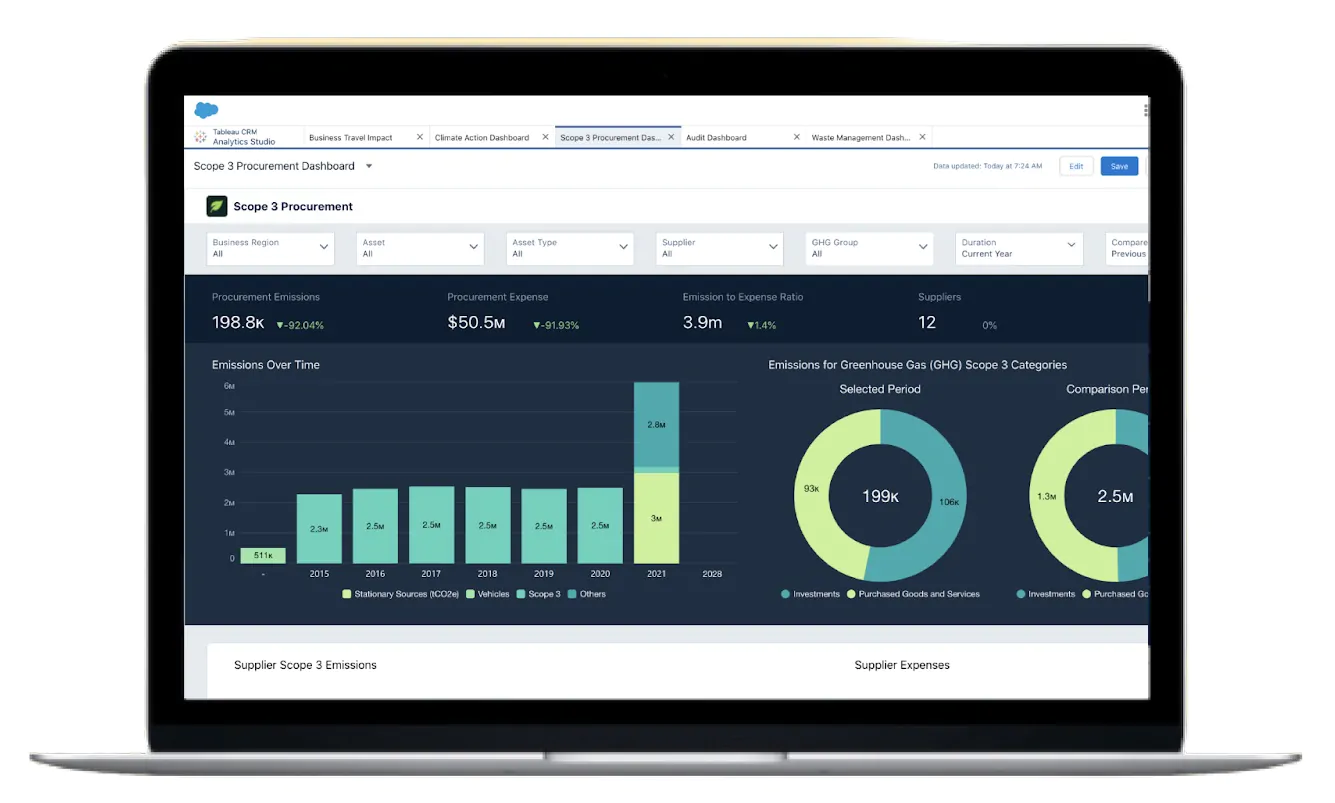Accelerating Net Zero Goals: The Time is Now

Are you still waiting for the next national disaster to occur before you decide to take action? From the destructive aftermath of floods to the scorching devastation of bushfires and the havoc-wreaking cyclones, the repercussions of a changing climate have transcended discussions and are now impacting the daily lives of all Australians.
As households and communities bear witness to the consequences of the lack of climate action, government bodies are preparing to enact and mandate various regulations aimed at mitigating carbon emissions, furthering the urgency for businesses to implement Net Zero strategies. The alarm bells for action are ringing louder than ever.
While 98% of CEOs believe it is their role to make their businesses more sustainable, 91% say too many competing priorities exist hindering progress in building resilience in their businesses to make the change. Partnering with an expert and harnessing tools like the Salesforce Net Zero Cloud could be the strategic advantage you need to navigate this transformative journey.
Net Zero Movement in a Nutshell
1. Net Zero: the movement to battle climate change by balancing the production of greenhouse gases (GHG) and their removal in the atmosphere with cleaner energy sources, improved energy efficiency, and offsetting remaining emissions.
2. Carbon Emission vs. Carbon Footprint:
- Carbon emission is the release of GHGs into the atmosphere, a natural part of the Earth’s carbon cycle for years.
- Carbon footprint on the other hand is the total amount of GHGs produced by an individual, organisation, or activity. When an entity accounts for its carbon emission, they are being aware of the footprint that they are leaving in the environment.
With the rise of industrialisation, the balance in the production and removal of GHGs has been disrupted, causing various critical environmental issues like climate change, rising sea levels, and adverse effects on human health and biodiversity loss.
It is important to note that while it is impossible to eliminate all emissions, it is possible to neutralise carbon footprint by lessening carbon production activities and offsetting the remaining emissions with reforestation and other activities.
3. How does an organisation get started with Net Zero:
- Account for all sources of carbon emissions.
- Scope 1- Emissions from the organisation’s own activities and operations
- Scope 2- Indirect emissions associated with purchased energy (electricity, heat or steam) that an organisation consumes
- Scope 3- Carbon emissions from your supply chain and other partners to account for the full value chain
NOTE: You can help speed up monitoring and data tracking with the help of technology like Salesforce Net Zero Cloud. Learn more about it in the section below.
- Set clear goals and Implement Net Zero within your organisation
- From the findings of your organisation’s carbon footprint, align objectives, set milestones, and implement plans within your timeline.
- Educate your people and actively engage stakeholders to keep things aligned with the goals.
- Identify key opportunities for carbon offsetting and transition to renewable energy sources.
- Improve energy efficiency and optimise operations to reduce scope 1 and 2 emissions. Encourage sustainable practices and consider the environmental impact of the suppliers and partners that you work with for scope 3 emission
- Work with a partner for continuous improvement.
How Salesforce Net Zero Cloud Can Help
Salesforce Net Zero Cloud is specifically designed to help organisations manage their carbon footprint and track their progress to net zero. By providing a singular view of data across your whole operations, easily identify and realign implementation activities to further improve your business’s efforts towards a greener future across the whole value chain:
In any project, quality is always valued over speed. There’s no use in being able to build fast, and finding out that it is filled with hundreds of errors in production, making it unusable. AI has no sense of data integrity since they only derive connections based on what they are fed, meanwhile humans possess the power of context, nuance, and real-world experience. ChatGPT may provide answers, but it’s humans who ultimately determine their accuracy.
- Get a single source of truth across your organisation’s carbon footprint.
Record data on carbon emissions and classify across categories, types, dates, and regions for the following:- Office buildings and other stationary assets
- Business travel (air travel, ground travel, hotel stays, and rental car usage)
- Electricity, other energy, and water consumption
- Waste tracking & management
- Easily compare initiatives with organisation-set targets to achieve them within the committed timelines. Get insights on quick wins with predictive forecasts and review what needs to be kept, removed, and changed within the supply chain to maximise sustainability initiatives.
- Track suppliers’ sustainability commitments and emissions with cutting-edge analytics by matching procurement spend to the value chain categories associated with reporting based on the Greenhouse Protocol. Easily identify sustainability efforts and targets from partners through scorecards.
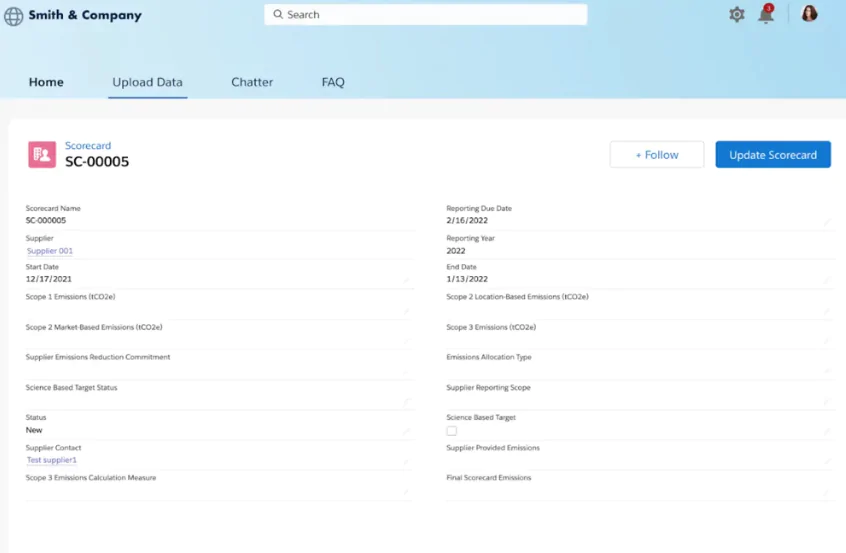
- Streamline your measurements and forecast your carbon footprint more accurately with real data in a singular view, tackling carbon accounting audits in weeks instead of months. Get started with preloaded datasets from key sustainability regulators such as:
- US Environmental Protection Agency (EPA)
- US Energy Information Administration (EIA)
- International Energy Agency (IEA)
- UK Department for Business, Energy & Industrial Strategy (BEIS)
- Greenhouse Gas (GHG) Protocol
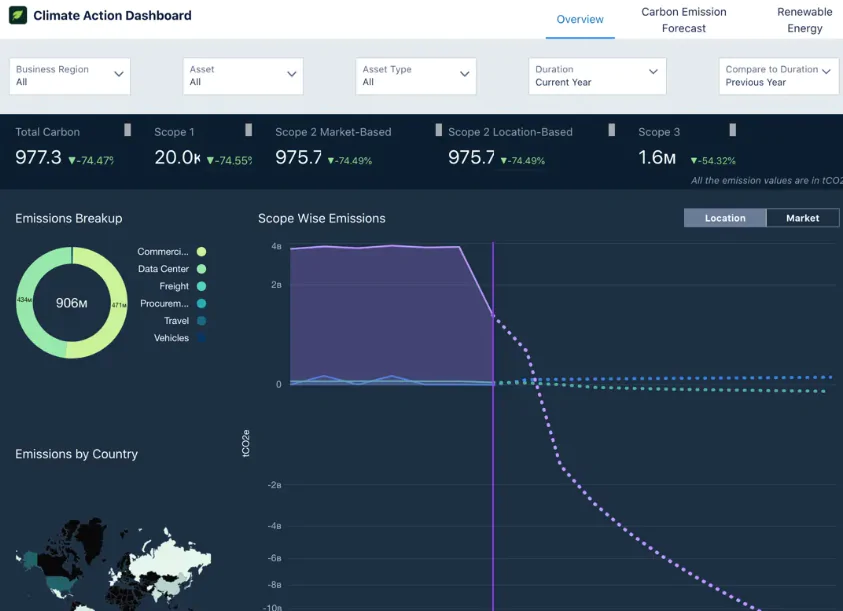
- Manage and allocate carbon credits. Invest in carbon offset projects and easily visualise the impact of the allocated credits on net emissions.
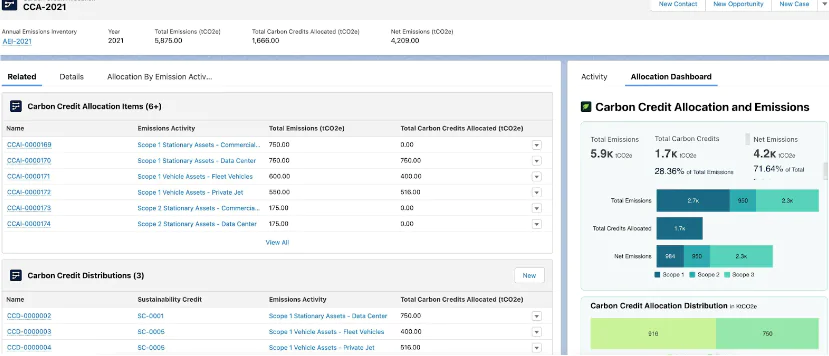
The Need for a Strategic Partner in Sustainability
Embarking on the path to Net Zero is not a solitary journey; it requires expertise, experience, and a thorough understanding of the intricate web of operations that businesses operate within. This is where a partnership with a Salesforce expert can prove transformative.
Salesforce aims to operationalise sustainability and empower other businesses to accelerate the world’s efforts towards Net Zero. But their solution doesn’t end with just software- they have built an ecosystem of experts continually pushing innovation to its limits with the same goal.
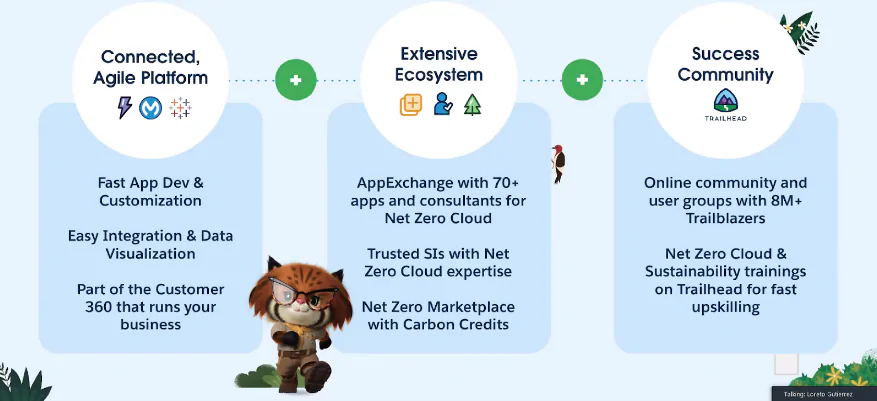
- Strategic Alignment:
Collaborating with a Salesforce partner ensures that the Net Zero strategy aligns with your business’s core values and objectives. Beyond that, sustainability is about long-term resilience. The Salesforce Net Zero Cloud, combined with the expertise of a partner, enables continuous improvement and adaptation, future-proofing businesses in a dynamic world. - Navigating Complexity:
The journey to Net Zero can be complex, involving changes in operations, supply chains, and customer engagement. A skilled partner can navigate these complexities, identifying potential roadblocks and providing effective solutions to mitigate risk. Being connected to a community helps identify common issues and resolve them backed with data and insights and real use cases. - Customised Solutions:
Every business is unique, and so are its sustainability challenges. Navigating the evolving landscape of Net Zero regulations demands agility.A Salesforce Net Zero Cloud partner can tailor solutions to address specific pain points, ensuring that the sustainability strategy fits seamlessly into existing processes. NetZero Cloud equips businesses to adapt swiftly to changing compliance requirements, minimising risks and penalties. - Clear Communications for Optimal Integration:
Demonstrating commitment to Net Zero requires engaging stakeholders effectively. Salesforce Net Zero Cloud enables real-time ESG reporting and interactive dashboards, fostering transparent communication with employees, customers, investors, and communities. To unlock Net Zero Cloud’s full potential, work with a partner who can seamlessly integrate the platform into your business’s landscape and operational processes. - Continuous Improvement:
Sustainability is not a one-time achievement but an ongoing commitment. A skilled partner can help monitor progress, identify areas for improvement, and shift strategies as needed. With the help of the partner ecosystem, get your team upskilled to understand how to navigate the changes and work on bettering your adoption.
ProQuest Joins the Sustainability Movement
At ProQuest Consulting, we are committed to driving sustainable change in Australia. We’re excited to be collaborating with Salesforce to champion Net Zero efforts that transcend business boundaries.
By engaging in this movement, we’re not only shaping a greener future for our company but also contributing to the broader goal of making sustainability an intrinsic part of every Australian business. Together, as we embrace innovation, expertise, and collaboration, we pave the way for a more sustainable and prosperous tomorrow. Work with us today! Hit us up with an email at info@proquestit.com or fill up our contact form: https://www.proquestit.com/contact
We’d be happy to jump in and help you navigate through the latest technologies and how to best achieve your sustainability goals powered by Salesforce Net Zero.
